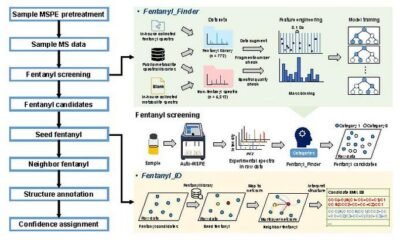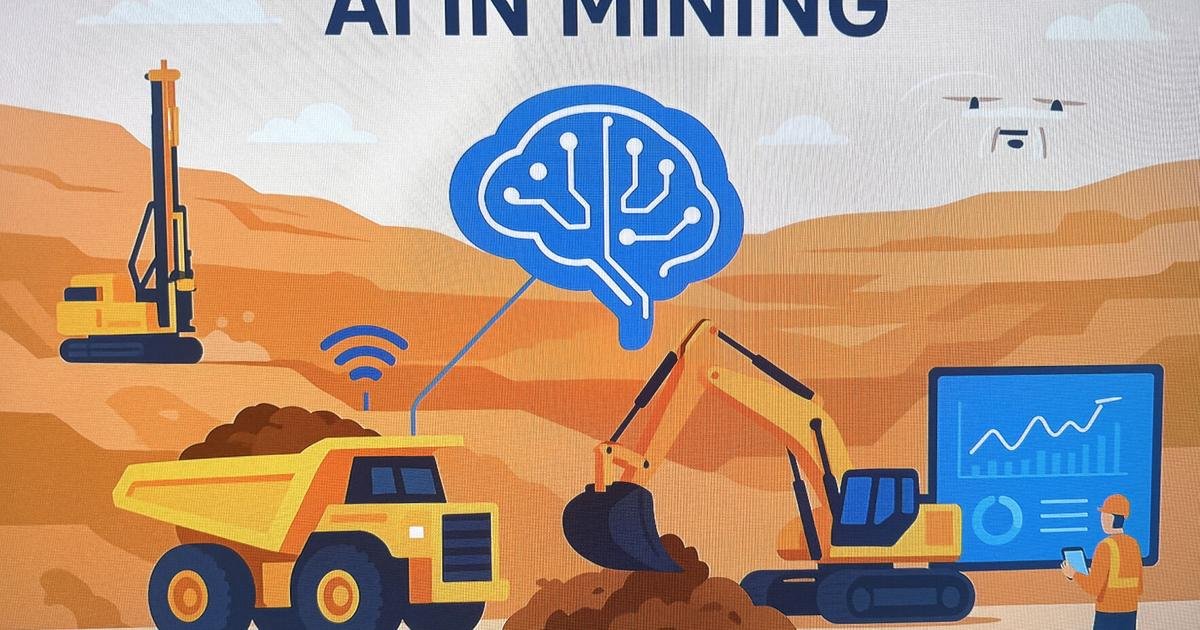AI Insights
AI starts to explain itself in drug discovery labs

The MIT team’s method works by taking a compressed representation of a protein and expanding it into a large, sparsely activated space. That makes it easier to see which specific biological features are driving the prediction. Some of the features identified in the study correspond to known protein families and molecular functions, while others align with broader biological categories, such as sensory systems. To make these features easier to interpret, the researchers used a language model to turn complex sequence patterns into plain-language summaries.
This level of visibility, Gujral said, allows researchers to evaluate not only whether a model is correct, but why, helping teams stay involved in the decision-making process. “You might also be able to discard unworthy candidates with human help if your model is interpretable,” he said.
Rosen-Zvi agreed that models that show their work can help engender trust. “Trustworthy AI enables meaningful collaboration between human expertise and machine intelligence,” she said. “It makes biases and limitations in biomedical data and models more visible.”
In domains like drug development, where data is often incomplete and complex, that visibility can improve both internal workflows and external communication. “Transparency around data provenance, openness in methodology and inclusive benchmarking” are all critical, she said.
Scientific rigor is not the only concern. Rosen-Zvi noted that interpretability also plays a social role, making it easier for scientists to communicate model results to colleagues, regulators or funders and to build trust in the decisions that follow.
“It is both a technical and trust challenge,” she said. “In biomedical sciences, this is further nuanced by the field’s dual reliance on mathematical modeling and narrative reasoning.”
AI Insights
Lomas: Artificial Intelligence in mining – An illusion or a revolution? – Elko Daily Free Press
AI Insights
FDA plans advisory committee meeting on AI mental health devices

The Food and Drug Administration will convene experts to discuss challenges around regulating mental health products that use artificial intelligence, as a growing number of companies release chatbots powered by large language models whose output can be unpredictable.
The move suggests the agency may soon tighten its focus on such tools.
The Nov. 6 meeting of the FDA’s Digital Health Advisory Committee (DHAC) will focus on “Generative Artificial Intelligence-Enabled Digital Mental Health Medical Devices,” according to a notice published Thursday in the Federal Register. The notice says newly released mental health products using AI pose “novel risks and, as mental health devices continue to evolve in complexity, regulatory approaches ideally will also evolve to accommodate these novel challenges.”

This article is exclusive to STAT+ subscribers
Unlock this article — and get additional analysis of the technologies disrupting health care — by subscribing to STAT+.
Already have an account? Log in
AI Insights
Inside Apple’s Artificial Intelligence Strategy

Apple’s artificial intelligence strategy has become something of a paradox: A company famed for redefining consumer technology is now seen as trailing behind in the generative AI boom. Siri, hyped for years as a next-generation personal assistant, falls short of latecomers like Google Assistant and ChatGPT in intelligence and contextual awareness. And the recent debut of the iPhone 17 barely mentioned Apple Intelligence, its AI system that is still largely in the making.
To this day, the lion’s share of Apple’s AI capabilities are outsourced to third-party systems — an awkward position for a company long renowned for innovation. Now, many are wondering if the world’s most valuable brand will step back for good, let leaders like Google or OpenAI take the lead, and stay squarely in its hardware roots.
What Is Apple’s AI Strategy?
Apple’s approach to artificial intelligence appears to be slow, yet deliberate. Instead of building massive, general-purpose language models and public-facing chatbots, the company favors small acquisitions, selective partnerships and in-house developments that emphasize privacy and on-device processing.
But, despite the perception of being slow, Apple’s approach follows a familiar pattern. The company has always avoided making splashy acquisitions, instead folding in small teams and technologies strategically until it can scale in-house once the timing is right. This playbook has been repeated time after time, from Apple Maps and Music to its custom silicon chips.
So, what some see as Apple being late to the party is actually a calculated turtle-and-hare strategy playing out — or at least that’s what CEO Tim Cook says. Current partnerships with OpenAI and Anthropic keep Apple in the game while it quietly works on its own foundation models. Whether its next step involves buying, partnering or doubling down on its own research, the expectation is that Apple likely won’t stay behind forever.
Apple’s AI Strategy at a Glance
Apple’s approach to AI blends small but targeted acquisitions and carefully chosen partnerships with major players. While it hasn’t made any blockbuster moves just yet, the company seems to be quietly shaping its portfolio and shifting talent around to bring more AI development in-house.
The Acquisitions We Know About
During Apple’s third-quarter earnings call, CEO Tim Cook said the company is “very open to” mergers and acquisitions that “accelerate” its product roadmap, and “are not stuck on a certain size company, although the ones that [Apple has] acquired thus far this year are small in nature.”
Only four of these companies have been identified thus far:
- WhyLabs: An AI observability platform that monitors machine learning models for anomalies to ensure reliable performance. For Apple, this means more secure generative AI and optimized on-device intelligence.
- Common Ground: Formerly known as TrueMeeting, this AI startup focused on creating hyper-realistic digital avatars and virtual meeting experiences. Its tech is likely to fold into Apple’s Vision Pro ecosystem.
- RAC7: The two-person video game developer behind mobile arcade title Sneaky Sasquatch. This is Apple’s first-ever in-house studio, which will focus on creating exclusive content for Apple Arcade.
- Pointable AI: Three days into the year, Apple bought this AI knowledge-retrieval startup that links enterprise data feeds to large language model workflows. The platform lets Apple create reliable LLM-driven applications that can be integrated into on-device search, AI copilots and automation tools.
Internally, Apple is restructuring its ranks to prioritize AI development within the company, according to Cook.
Companies Apple Is Talking To
Apple has reportedly been exploring the purchase of Mistral AI, a French developer now valued at about $14 billion. Mistral has its own chatbot, Le Chat, which runs on its own AI models, as well as various open-source offerings, consumer apps, developer tools and a wide selection of APIs — all while sharing Apple’s hardline stance on privacy. For a while, Apple was also thinking about acquiring Perplexity, but walked away from the multi-billion-dollar deal in part due to mounting concerns over the AI search engine’s controversial web-scraping practices, which clash with Apple’s emphasis on privacy. Instead, Apple plans to become a direct competitor, beefing up its Siri product.
Meanwhile, Apple’s partnership with Anthropic has expanded significantly over the past few months. The collaboration now includes integrating Anthropic’s Claude model into Apple’s Xcode software, creating a “vibe coding” developer tool that helps write, edit and test code more efficiently. Apple is also considering Anthropic’s models in its long overdue Siri overhaul, with the new version expected to launch in early 2026.
But it’s not the only contender. Apple confirmed to 9to5Mac that it will be integrating OpenAI’s GPT-5 model with the iOS 26’s fall launch, and has reportedly reached a formal agreement with Google to test a custom Gemini model for the virtual assistant. Internally known as “World Knowledge Answers,” this feature would let users search information from across their entire device and the web, delivering its findings in AI-generated summaries alongside any relevant text, photos, videos and points of interest in a single, digestible view.
Together, these partnerships with Anthropic, OpenAI and Google give Apple the flexibility to test different AI systems and products and see which fits best into their existing systems, while also keeping their cards close to the chest.
How the Google Search Deal Fits In
Apple’s AI plans are also closely tied to its $20 billion-per-year search deal with Google, which makes Google’s search engine the default in Apple’s Safari browser and Siri. That contract accounts for a massive portion of Apple’s Services revenue — roughly 20 percent — giving the company the financial freedom to take a slower, more deliberate approach to AI.
Fortunately for Apple, this deal is still allowed under Google’s recent antitrust ruling. But if regulators ever choose to limit or terminate the deal, Apple would lose a critical cash stream and be forced to build its own solution. That looming risk could force Apple’s typical cautious approach into a sprint, making partnerships, acquisitions and internal development more urgent.
Why Is Apple Moving Slowly on AI?
Apple’s slow pace largely stems from a push-pull standoff between two top executives at the company. Eddy Cue, the senior vice president of Services, has long championed bold acquisitions to accelerate growth, while Craig Federighi, who oversees Apple’s operating system, wants to focus on building from within. Cue’s camp believes that buying startups is the key to gaining the upper hand in AI, whereas Federighi’s side sees acquisitions as a source of complexity and cultural friction.
At this point, Apple stands in stark contrast to competitors like Google, Meta and Microsoft, which are spending billions to acquire startups and poach top AI talent with hundred-million-dollar signing bonuses and even higher compensation packages. Instead, Apple has stuck to its cautious playbook, which has probably spared it from some costly missteps over the years. But it also leaves it vulnerable. If its rivals continue to outpace it in AI investment and adoption, Apple’s reputation of being “too big to fail” may face its toughest test yet.
Apple’s History of Selective Acquisitions
Apple has made more than 100 acquisitions in its history, but almost all were small, quiet and tech-driven. Now, with $133 billion in spending money, the company has enough to make a mega AI acquisition. But, given Apple’s patterned behavior of restraint, it may choose not to — which is why the current, multi-billion-dollar speculation around the company’s next move is such a big deal.
Here is a quick look at Apple’s past money moves:
1997 — NeXT ($400 million): This was the computer company Steve Jobs founded after leaving Apple. Once acquired, it brought Jobs back to the company as well as the foundation for the operating systems used for macOS and iOS.
2005 — FingerWorks (undisclosed amount): A startup that made gesture-recognition tech that enabled the iPhone’s multi-touch interface.
2008 – PA Semi ($278 million): Chip design firm that gave Apple the know-how to build its own silicon, leading to the A-series processors in iPhones and iPads and the M-series in Macs.
2010 – Siri ($200 million): A voice-assistant startup spun out of SRI International, Siri brought conversational AI to the iPhone and became a core iOS feature.
2012 – AuthenTec ($356 million): The fingerprint sensor company behind Touch ID.
2013 – PrimeSense (about $350 million): The 3D sensing tech that powered Face ID and AR depth cameras.
2014 – Beats Electronics ($3 billion): Apple’s largest-ever acquisition brought premium headphones, the Beats Music streaming service and key executives like Jimmy Lovine and Dr. Dre to the company, both of whom helped jumpstart Apple Music.
2018 – Shazam ($400 million): A music recognition app that was integrated into Siri and Apple Music.
2020 – Xnor.ai ($200 million): An edge AI startup that boosted Apple’s on-device, privacy-first AI by running machine learning models directly on devices, eliminating the need to send data to the cloud.
Does Apple use AI?
Yes, Apple has long incorporated artificial intelligence into its devices through features like Face ID, Siri and Apple Pay. The company’s proprietary AI system, Apple Intelligence, has been integrated across iOS, iPad OS and macOS.
Is Apple building its own AI?
Yes, Apple is actively developing its own artificial intelligence system, called Apple Intelligence. It is also working on a massive Siri upgrade, which is slated to roll out in 2026.
What AI companies has Apple bought?
Some of the AI companies Apple has acquired over the years include:
- WhyLabs: An AI observability platform that monitors machine learning models for anomalies to ensure reliable performance.
- Common Ground: An AI startup focused on creating hyper-realistic digital avatars and virtual meeting experiences. Its tech is likely to fold into Apple’s Vision Pro ecosystem.
- Pointable AI: An AI knowledge-retrieval startup that links enterprise data feeds to large language model workflows.
- Siri: A voice assistant spun out of SRI International that Apple has since integrated as a core iOS feature.
- AuthenTec: A fingerprint sensor company that Apple used to offer Touch ID.
- PrimeSense: 3D sensing technology that powers Apple’s FaceID and AR depth cameras.
- Shazam: A music recognition app that was integrated into Siri and Apple Music.
- Xnor.ai: Edge AI tech used to boost Apple’s on-device, privacy-first AI by running machine learning models directly on the device, without having to send any data to the cloud.
-

 Business2 weeks ago
Business2 weeks agoThe Guardian view on Trump and the Fed: independence is no substitute for accountability | Editorial
-
Tools & Platforms1 month ago
Building Trust in Military AI Starts with Opening the Black Box – War on the Rocks
-

 Ethics & Policy2 months ago
Ethics & Policy2 months agoSDAIA Supports Saudi Arabia’s Leadership in Shaping Global AI Ethics, Policy, and Research – وكالة الأنباء السعودية
-

 Events & Conferences4 months ago
Events & Conferences4 months agoJourney to 1000 models: Scaling Instagram’s recommendation system
-

 Jobs & Careers2 months ago
Jobs & Careers2 months agoMumbai-based Perplexity Alternative Has 60k+ Users Without Funding
-

 Podcasts & Talks2 months ago
Podcasts & Talks2 months agoHappy 4th of July! 🎆 Made with Veo 3 in Gemini
-

 Education2 months ago
Education2 months agoMacron says UK and France have duty to tackle illegal migration ‘with humanity, solidarity and firmness’ – UK politics live | Politics
-

 Education2 months ago
Education2 months agoVEX Robotics launches AI-powered classroom robotics system
-

 Funding & Business2 months ago
Funding & Business2 months agoKayak and Expedia race to build AI travel agents that turn social posts into itineraries
-

 Podcasts & Talks2 months ago
Podcasts & Talks2 months agoOpenAI 🤝 @teamganassi






















